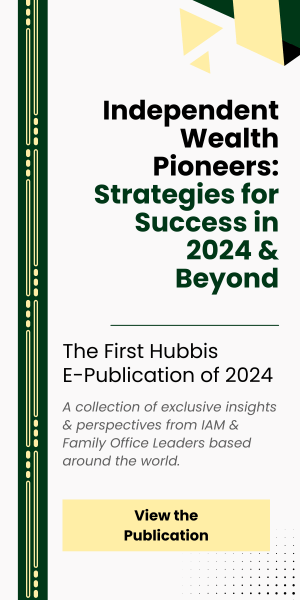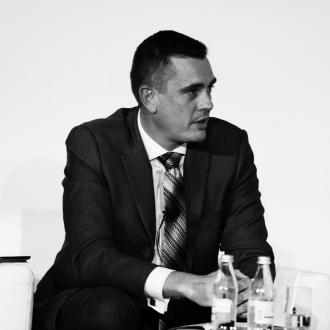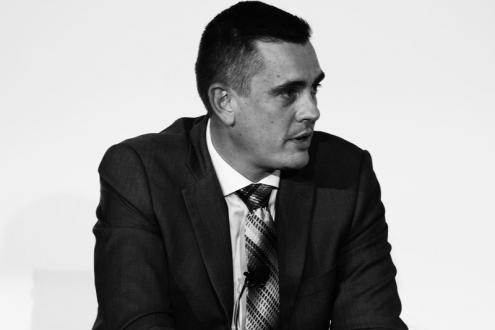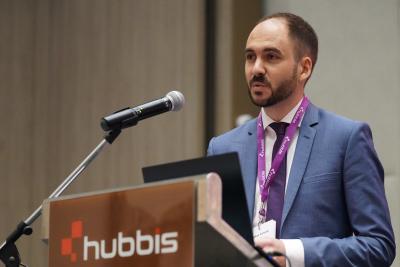The Role of Digitalisation in Wealth Management and the Road Map Required
Ryan Page is Head of Sales for ASEAN/Pacific/South Asia) in the Wealth Division at Refinitiv, a LSEG Business and made a presentation at the Hubbis live Malaysian Wealth Management Forum on April 13. He explained to delegates how his team delivers data analytics and workflow tools to wealth management firms, private banking firms, and traditional as well as online brokers across the region. The firm’s offering is split between the advisor experience and investor solutions, two different angles of refraction on the same types of challenges. He highlighted the key wealth industry trends that are driving their solutions and the competitive environment that is encouraging more of the incumbents and new entrants to boost their data proposition and personalisation. And he laid out a clear road map to help industry participants think about their digital transformation missions and implementation.
Ryan opened his presentation by focusing on competition, noting that digital native new entrants were cropping up across the region, unencumbered by legacy technology and systems, and funded to deliver a digitised and cost-efficient wealth management model. Their arrival coincides with shifts in the holding of wealth across the region, as the second, third and even fourth generations inherit wealth from the founders and create new wealth of their own.
Shifting demographics
“The shifting demographics are central to the proposition you in the industry will be evolving as you decide on segmentation between the generations, between wealth categories and also between genders,” he said.
And at the same time, he observed that another key trend is towards optimised automation, efficiency and productivity, making sure that you get the most out of your technology and your people. And that, he said, ties into talent retention as well, and the better technology you provide your advisors and RMs, the better the appeals of the institution and their talent retention.
Client centricity and the USX
And this all helps drive client centricity, as you engage your clients in a digital world, he remarked. Moreover, it all starts from day one, with optimised and frictionless digital client onboarding and simplified compliance protocols for clients, all the way through to a much enhanced and more personalised advisory and execution offering.
“The hybrid engagement model is central to this for the wealth industry in Asia,” he said. “Clients and advisors are offered a unified platform. And as I mentioned, our business is split into the advisor experience or solutions and the investor experience and solutions. Having a unified platform across both of those will allow a bank or advisory firm the ability to onboard new products and services onto that single platform and having the advisors well versed and able to work with those as well as their clients.”
How to be a magnet for private clients
He pointed to the 2022 wealth management survey Refinitiv had recently released titled: ‘Getting Personal – How wealth firms can attract and retain the modern investor’. The report canvassed over 1500 global investors, of which one-third are in Asia, with a 70:30 segmentation split between mass affluent and high net worth markets.
He highlighted some of the key findings. Some 72% of millennials use mobile apps to access their account information, he reported. “They are the future of the wealth industry, so digital connectivity is clearly central to growth and engagement in the future,” he stated.
They also found that 58% of clients of all types said their most reliable source of information was advisor recommendations.
The hybrid model wins
“Technology is clearly not replacing talent,” he said. “It appears that wealth management will for many years ahead remain a high-touch industry in which trust and relationships are of huge importance. Technology, if employed well, is there to enhance the experience and enhance that genuine trust and the strong relationship between the human advisor and client. And digital is there for example to monitor portfolios, with nearly half of replies indicating they access their portfolio information via mobile.”
He added that 38% of millennials value the advisor for their investment information and the recommendations and that 35% also look at social media. “It is therefore also evident that social media for these millennials is essential, so any bank or wealth firm needs to understand how their content is going to be ported and viewed on social media, which will likely only become more and more important.”
Holistic wealth management
Ryan then offered further insights from the survey, noting that advisor dashboards that offer a clear view of clients and their investments were very important, as is the ability for clients to add in manually any other investment positions they have. “This type of holistic view of the wealth position at any one time is very valuable,” he said. “Moreover, two-way chat capability is increasingly important.”
He pointed to some of the key factors that clients consider when choosing or switching advisors. Costs, he said, would always be a key factor, along with a diverse product and service breadth, including access to the new arena of digital assets, especially important for the younger types of clients.
User train of thought
He also noted that for the clients aged 55 and over, only 16% said digital capabilities are very important, implying that it is not really worth investing heavily in that portion of the client demographic, as the digital experience is apparently not a key driving force in their choice of banks or firms.
“But as you come further down the age groups, digital capabilities rise in prominence and become increasingly crucial,” Ryan remarked. “And in all cases, making sure that the advisors and RMs have the right tools and really understand the platform capabilities is really important in making them more effective in their roles.”
Step by step into the future
Ryan then offered delegates a brief insight into his suggested approach to digital transformation by clients, explaining that they should first reach an internal consensus on what they are trying to achieve with technology and why.
“Technology investment has been going on for years,” he said, “but digital transformation, creating new engagement models, new revenue streams from those processes, that is newer for this industry and needs to be understood and also agreed upon across the firm from a top down perspective.”
He said that once they had done this, wealth management institutions needed to assess their current capabilities, take a good look at your business, and what needs to change. “If you are not honest about your current capabilities and where you're going to need to invest, and if you overlook an important step, it can cause all sorts of trouble later on,” he cautioned.
Then comes the ‘how to’ element of the process. “If you have achieved steps one and two as I just outlined, then using an outside consulting source to help with the ‘how’ can certainly deliver value,” he advised. The next step is then to earn buy-in and participation throughout the organisation, so that everyone understands the goals and the big picture vision. After which, they need to ensure that the entire bank/firm and the client base understand the road map for the journey.
Realising the collective vision
“The execution can then take place,” he said, “and if you've set the right framework, and you've communicated it well, and you have a clear view in terms of what you're trying to achieve, execution of the programme will be a lot cleaner and more effective. In short, you will be able to realise your vision and the key goals you have established.”

More from Ryan Page, LSEG
Latest Articles







